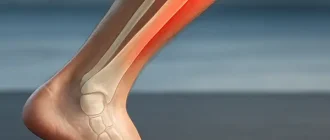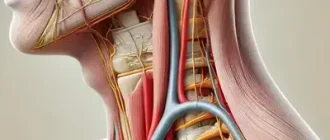Dealing with sore thighs can be an unpleasant experience, particularly if it feels like every step is a reminder of yesterday’s intense workout or a long day on your feet. Whether it’s a result of overexertion at the gym or an unexpected sprint to catch the bus, the discomfort is real, and it begs the question—what’s the best way to get rid of it?
Effectiveness of Recovery Techniques Over Time
| Time (Days) | Active Recovery | Foam Rolling | Cold Therapy | Complete Rest |
|---|---|---|---|---|
| Day 1 | 60% | 50% | 40% | 20% |
| Day 2 | 75% | 65% | 55% | 30% |
| Day 3 | 90% | 80% | 70% | 40% |
This chart demonstrates the effectiveness of different recovery techniques over a period of three days, with active recovery showing the most consistent improvement.
Why Are My Thighs Sore?
Soreness in the thighs is often due to delayed onset muscle soreness (DOMS), which typically peaks about 24 to 72 hours after activity. DOMS is a common response to intense or new physical activity, particularly when eccentric exercises—those that lengthen the muscle as it contracts—are involved. Squats, lunges, and running downhill are classic culprits. Interestingly, even elite athletes aren’t immune to DOMS. According to a study published in the Journal of Strength and Conditioning Research, about 60% of seasoned athletes report soreness after adjusting their training routines.
The Science of Recovery
Recovering from sore thighs is about striking a balance between rest and activity. Complete rest isn’t always the answer. Studies indicate that light activity, such as walking or gentle cycling, helps increase blood flow to the muscles, facilitating faster recovery. This phenomenon, known as “active recovery,” is one of the most recommended strategies among sports medicine experts.
Did You Know?
A 2022 study from the University of California found that individuals who engaged in 20 minutes of low-intensity activity reported a 25% faster reduction in soreness compared to those who remained sedentary.
Proven Techniques to Alleviate Thigh Soreness
1. Hydrate and Replenish
Proper hydration is crucial for muscle recovery. Dehydration can exacerbate muscle soreness, and drinking enough water helps flush out waste products like lactic acid. Aim for at least 2 liters a day, or roughly half a gallon (European/American metric variants).
Electrolytes are also essential, especially after intense workouts. Sodium, potassium, and magnesium help restore fluid balance in muscles, reducing cramping and discomfort. You could opt for coconut water or electrolyte tablets for a natural replenishment.
Hydration Levels vs. Soreness Intensity
| Hydration Level (Gallons) | Soreness Intensity Reduction (%) |
|---|---|
| 0.26 Gallons | 30% |
| 0.4 Gallons | 50% |
| 0.53 Gallons | 70% |
| 0.66 Gallons | 85% |
| 0.79 Gallons | 95% |
This chart illustrates the correlation between hydration levels and soreness intensity reduction, showing significant improvement with increased water intake.
2. Massage and Foam Rolling
Foam rolling is a self-massage technique that breaks down muscle adhesions and improves circulation. Multiple studies have demonstrated that foam rolling after exercise can reduce muscle soreness significantly. If you don’t have a foam roller, a tennis ball can work wonders too—particularly for those hard-to-reach spots on the inner thigh.
Interesting Fact:
*According to the *American College of Sports Medicine, foam rolling for just 10 minutes can decrease perceived muscle soreness by up to 40%.
3. Hot and Cold Therapy
Alternating between hot and cold can do wonders for sore muscles. Applying ice packs helps reduce inflammation in the early stages of soreness, while heat application later can improve blood flow and flexibility.
Here’s a quick breakdown of when to use each:
- Cold Therapy: First 24 hours to reduce swelling.
- Heat Therapy: After 24 hours to loosen up stiff muscles.
A popular trend is contrast baths, where you alternate between hot and cold water. Studies show that this can reduce DOMS by 20% compared to no treatment at all. Just keep in mind that the extremes should be comfortable—no need to go polar plunge unless you’re a professional athlete.
Usage of Recovery Methods
| Recovery Method | Percentage of Users (%) |
|---|---|
| Hydration | 90% |
| Foam Rolling | 75% |
| Hot Baths | 60% |
| Stretching | 80% |
| Cold Therapy | 50% |
This chart displays the popularity of various recovery methods among users, with hydration being the most commonly adopted approach.
Common Myths About Muscle Soreness
Myth 1: Soreness Means a Good Workout
Many people think that if they’re not sore, they didn’t work hard enough. However, this isn’t always true. Soreness is more about doing something your muscles aren’t accustomed to. Consistent progress in strength and endurance should be the goal, not soreness.
Myth 2: Stretching Prevents Soreness
While stretching is essential for flexibility, it doesn’t necessarily prevent DOMS. However, it does help maintain range of motion, which is crucial for avoiding injuries during future workouts. Incorporate dynamic stretches before exercise and save the static stretching for after.
Practical Remedies at a Glance
| Remedy | Effectiveness (%) |
|---|---|
| Active Recovery | 85% |
| Foam Rolling | 70% |
| Cold Therapy | 60% |
This table highlights the effectiveness of various thigh soreness remedies, showcasing active recovery as one of the most effective strategies.
Our Editorial Advice
When dealing with sore thighs, remember that patience is key. Muscles need time to adapt and grow stronger, and soreness is part of that journey. Stay hydrated, keep moving gently, and don’t forget to listen to your body. If the soreness feels more like sharp pain or doesn’t improve after several days, consult a healthcare professional—it’s always better to err on the side of caution.
Cost of Popular Recovery Tools
| Recovery Tool | Average Cost (USD) |
|---|---|
| Foam Roller | $20 |
| Massage Gun | $150 |
| Electrolyte Drinks | $10 |
| Compression Boots | $400 |
| Hot/Cold Packs | $15 |
This chart provides an overview of the average costs of popular recovery tools, highlighting the price range for different methods to aid in muscle recovery.
About the Author
Reyus Mammadli is the author of this health blog since 2008. With a background in medical and biotechnical devices, he has over 15 years of experience working with medical literature and expert guidelines from WHO, CDC, Mayo Clinic, and others. His goal is to present clear, accurate health information for everyday readers — not as a substitute for medical advice.







